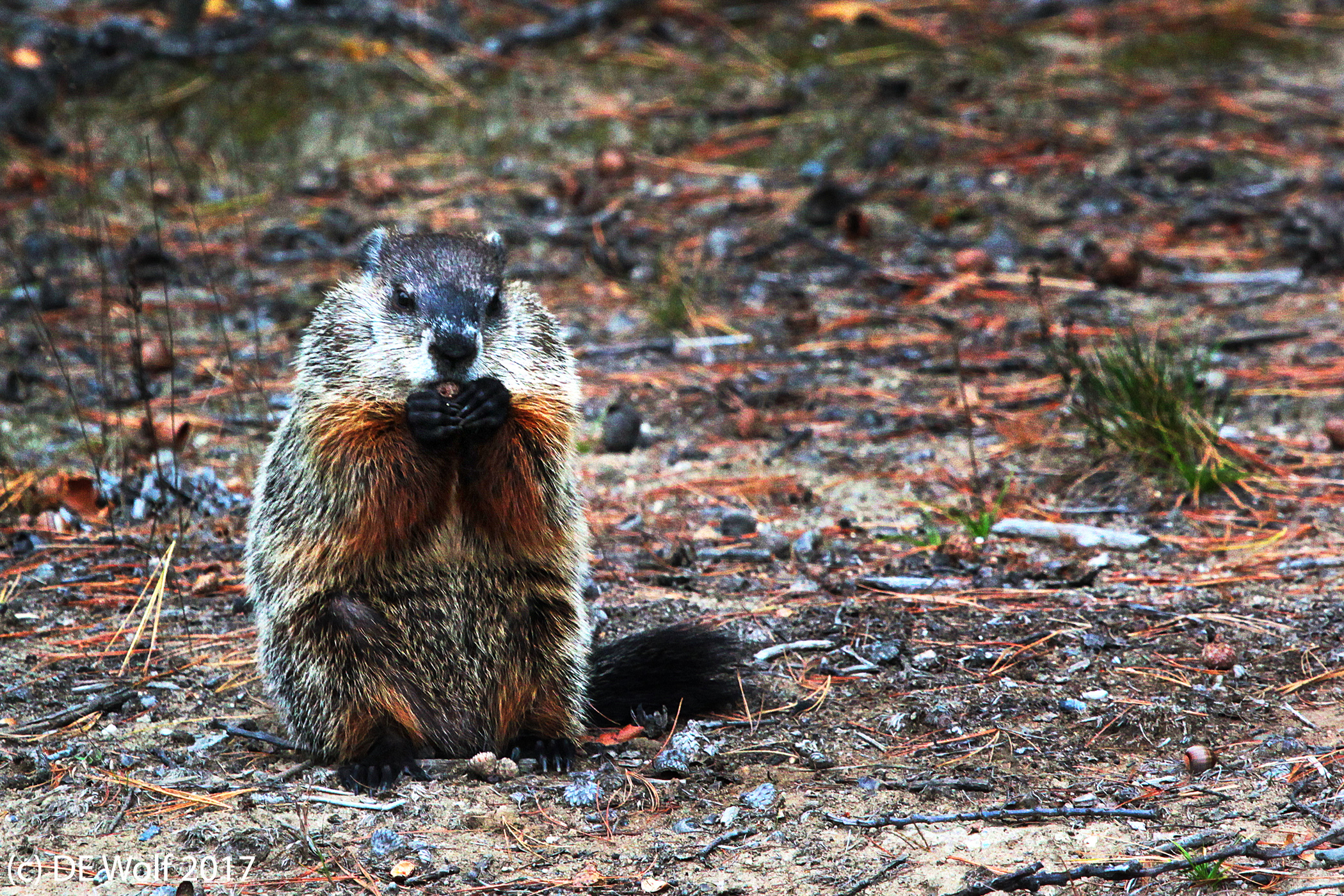My son and I went hiking yesterday at the Assabet River National Wildlife Refuge, and just as I was getting out of the car, I was greeted by the fine fellow of Figure 1. He is a woodchuck, Marmota monax, and he was pretty nonplussed by my presence, just enjoying his late afternoon nutty snack. It was time to build up some body fat before a long winter’s nap.
Well, the photograph gives me the opportunity to put to bed some of the weightier questions of life.
- Is a woodchuck a groundhog? Answer yes, they are different names for the same animal; as are: chuck, wood-shock, groundpig, whistler, thickwood badger, Canada marmot, monax, moonack, weenusk, and red monk. Significantly, Monax was a Native American name of the woodchuck, which meant “the digger.” Which woodchucks do – rather than chucking wood.
- Is the badger related to a woodchuck? Not even close!
- Is a woodchuck a gopher? No the woodchuck and the gopher are different animals. “Somebody call for an excavation expert?”
Now the woodchuck has a noble lineage. It was first described by Linnaeus in 1758. But, I believe more to the point is that a family of woodchucks has been living by the stonewall of my backyard as long as I have been here. I saw him last summer carrying off huge tomatoes from my neighbor’s vegetable garden – one in his mouth and one in his hands. He laughs at the wire fence she has put up to keep him out. In the 19th century there was a wheelwright’s home on the site where I live. I suspect that this family of groundhogs were living there then and probably go much further back, beyond even the time of King Phillip’s War. From their perspective we are the one’s that come and go.
Canon T2i with EF100-400mm f/4.5-5.6L IS USM lens at 340 mm, ISO 800, Aperture Priority AE Mode, 1/320th sec at f/7.1 with -1 exposure compensation.

